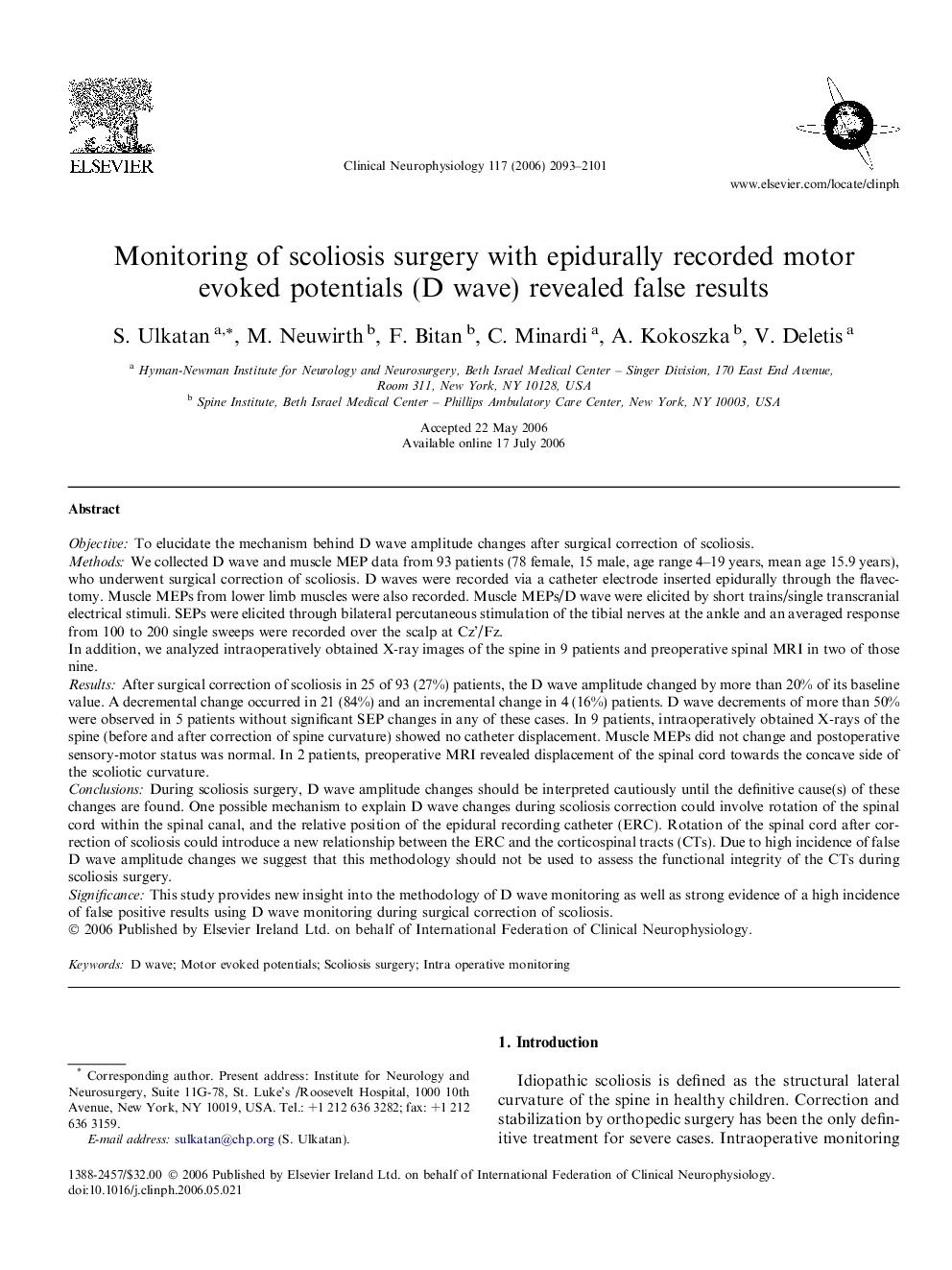| کد مقاله | کد نشریه | سال انتشار | مقاله انگلیسی | نسخه تمام متن |
|---|---|---|---|---|
| 3047827 | 1185066 | 2006 | 9 صفحه PDF | دانلود رایگان |

ObjectiveTo elucidate the mechanism behind D wave amplitude changes after surgical correction of scoliosis.MethodsWe collected D wave and muscle MEP data from 93 patients (78 female, 15 male, age range 4–19 years, mean age 15.9 years), who underwent surgical correction of scoliosis. D waves were recorded via a catheter electrode inserted epidurally through the flavectomy. Muscle MEPs from lower limb muscles were also recorded. Muscle MEPs/D wave were elicited by short trains/single transcranial electrical stimuli. SEPs were elicited through bilateral percutaneous stimulation of the tibial nerves at the ankle and an averaged response from 100 to 200 single sweeps were recorded over the scalp at Cz’/Fz.In addition, we analyzed intraoperatively obtained X-ray images of the spine in 9 patients and preoperative spinal MRI in two of those nine.ResultsAfter surgical correction of scoliosis in 25 of 93 (27%) patients, the D wave amplitude changed by more than 20% of its baseline value. A decremental change occurred in 21 (84%) and an incremental change in 4 (16%) patients. D wave decrements of more than 50% were observed in 5 patients without significant SEP changes in any of these cases. In 9 patients, intraoperatively obtained X-rays of the spine (before and after correction of spine curvature) showed no catheter displacement. Muscle MEPs did not change and postoperative sensory-motor status was normal. In 2 patients, preoperative MRI revealed displacement of the spinal cord towards the concave side of the scoliotic curvature.ConclusionsDuring scoliosis surgery, D wave amplitude changes should be interpreted cautiously until the definitive cause(s) of these changes are found. One possible mechanism to explain D wave changes during scoliosis correction could involve rotation of the spinal cord within the spinal canal, and the relative position of the epidural recording catheter (ERC). Rotation of the spinal cord after correction of scoliosis could introduce a new relationship between the ERC and the corticospinal tracts (CTs). Due to high incidence of false D wave amplitude changes we suggest that this methodology should not be used to assess the functional integrity of the CTs during scoliosis surgery.SignificanceThis study provides new insight into the methodology of D wave monitoring as well as strong evidence of a high incidence of false positive results using D wave monitoring during surgical correction of scoliosis.
Journal: Clinical Neurophysiology - Volume 117, Issue 9, September 2006, Pages 2093–2101